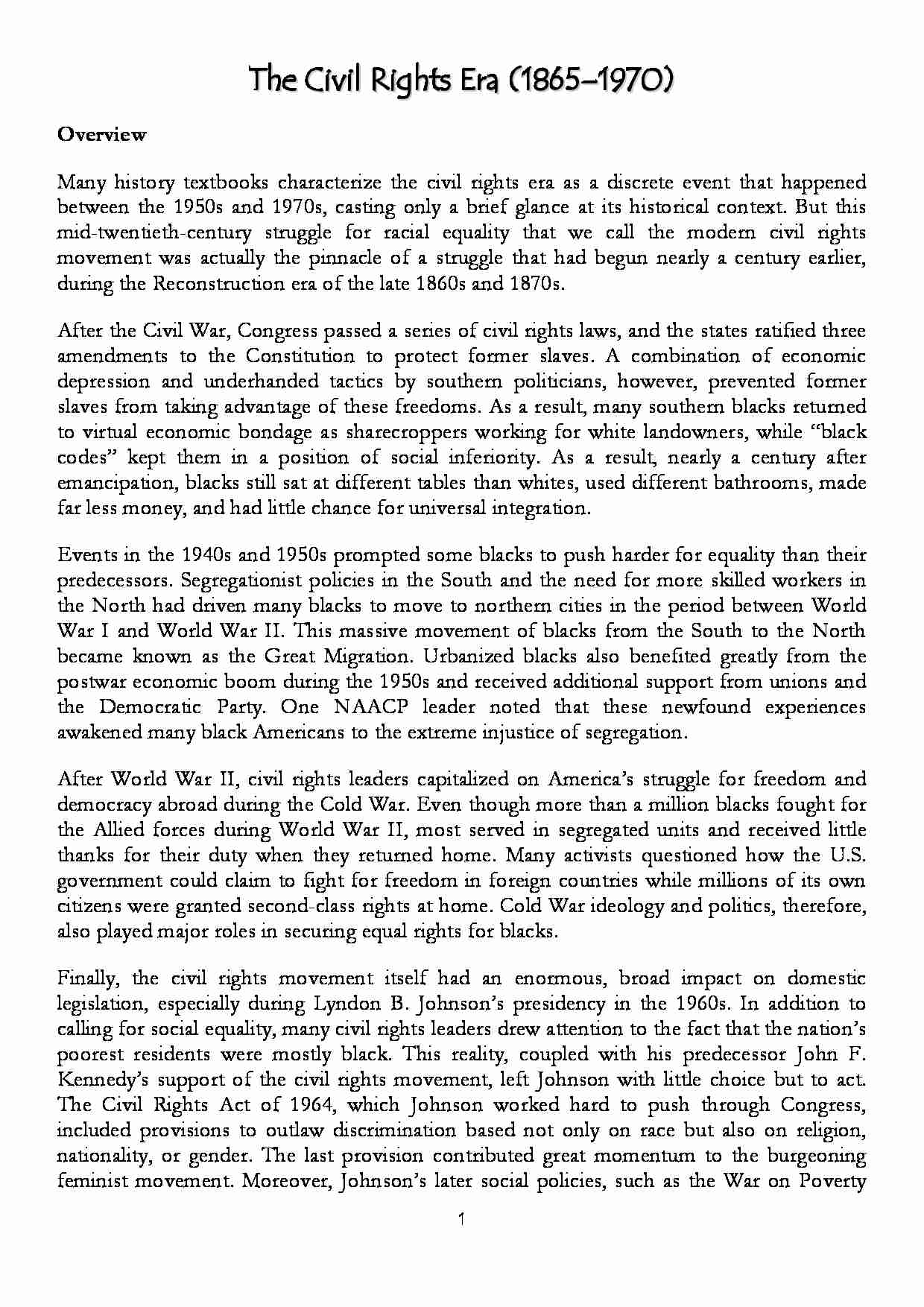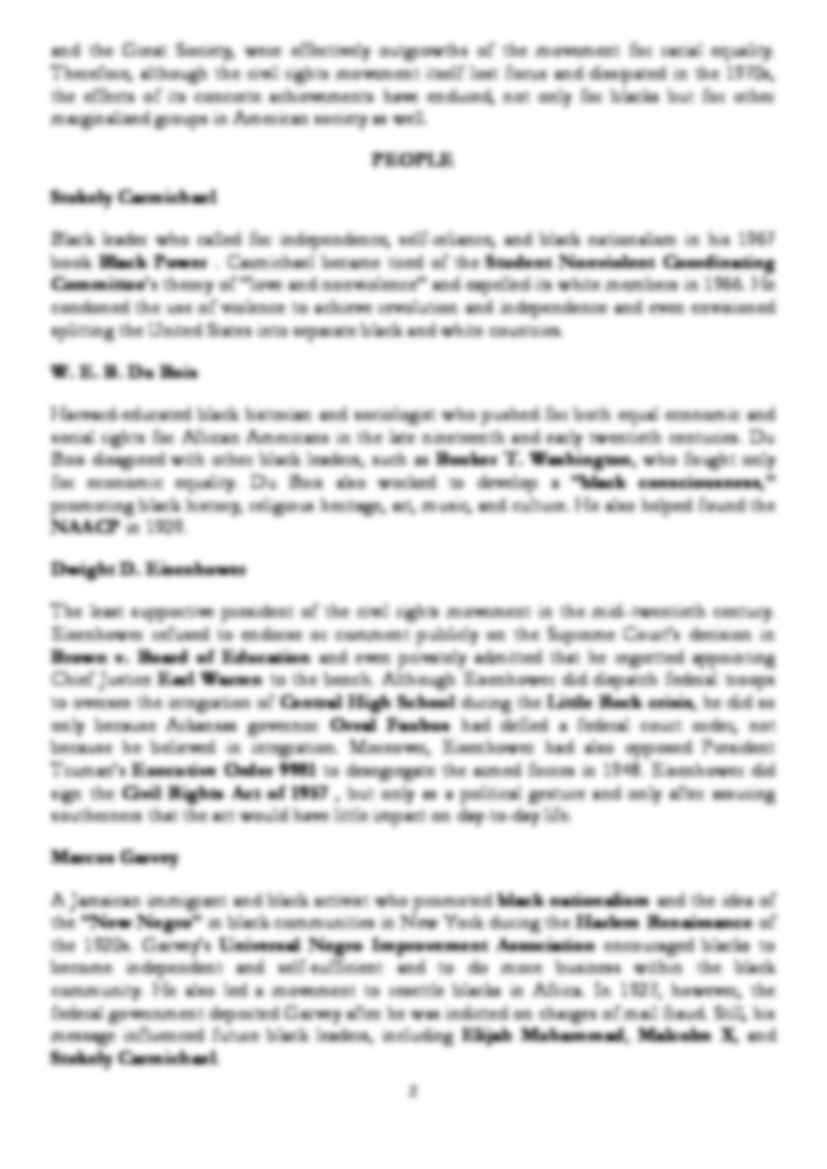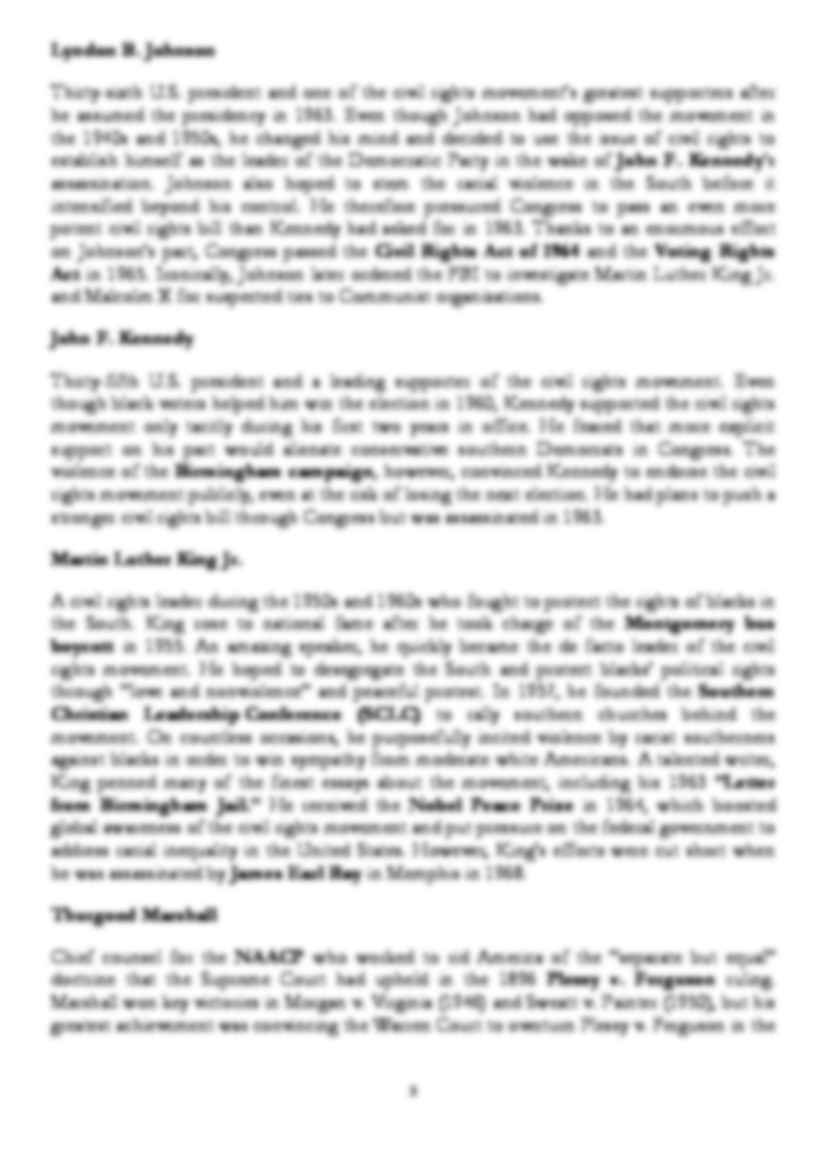To tylko jedna z 42 stron tej notatki. Zaloguj się aby zobaczyć ten dokument.
Zobacz
całą notatkę



The Civil Rights Era (1865-1970)
Overview
Many history textbooks characterize the civil rights era as a discrete event that happened between the 1950s and 1970s, casting only a brief glance at its historical context. But this mid-twentieth-century struggle for racial equality that we call the modern civil rights movement was actually the pinnacle of a struggle that had begun nearly a century earlier, during the Reconstruction era of the late 1860s and 1870s.
After the Civil War, Congress passed a series of civil rights laws, and the states ratified three amendments to the Constitution to protect former slaves. A combination of economic depression and underhanded tactics by southern politicians, however, prevented former slaves from taking advantage of these freedoms. As a result, many southern blacks returned to virtual economic bondage as sharecroppers working for white landowners, while “black codes” kept them in a position of social inferiority. As a result, nearly a century after emancipation, blacks still sat at different tables than whites, used different bathrooms, made far less money, and had little chance for universal integration.
Events in the 1940s and 1950s prompted some blacks to push harder for equality than their predecessors. Segregationist policies in the South and the need for more skilled workers in the North had driven many blacks to move to northern cities in the period between World War I and World War II. This massive movement of blacks from the South to the North became known as the Great Migration. Urbanized blacks also benefited greatly from the postwar economic boom during the 1950s and received additional support from unions and the Democratic Party. One NAACP leader noted that these newfound experiences awakened many black Americans to the extreme injustice of segregation.
After World War II, civil rights leaders capitalized on America's struggle for freedom and democracy abroad during the Cold War. Even though more than a million blacks fought for the Allied forces during World War II, most served in segregated units and received little thanks for their duty when they returned home. Many activists questioned how the U.S. government could claim to fight for freedom in foreign countries while millions of its own citizens were granted second-class rights at home. Cold War ideology and politics, therefore, also played major roles in securing equal rights for blacks.
Finally, the civil rights movement itself had an enormous, broad impact on domestic legislation, especially during Lyndon B. Johnson's presidency in the 1960s. In addition to calling for social equality, many civil rights leaders drew attention to the fact that the nation's poorest residents were mostly black. This reality, coupled with his predecessor John F. Kennedy's support of the civil rights movement, left Johnson with little choice but to act. The Civil Rights Act of 1964, which Johnson worked hard to push through Congress, included provisions to outlaw discrimination based not only on race but also on religion, nationality, or gender. The last provision contributed great momentum to the burgeoning feminist movement. Moreover, Johnson's later social policies, such as the War on Poverty and the Great Society, were effectively outgrowths of the movement for racial equality. Therefore, although the civil rights movement itself lost focus and dissipated in the 1970s, the effects of its concrete achievements have endured, not only for blacks but for other marginalized groups in American society as well.
... zobacz całą notatkę






Komentarze użytkowników (0)